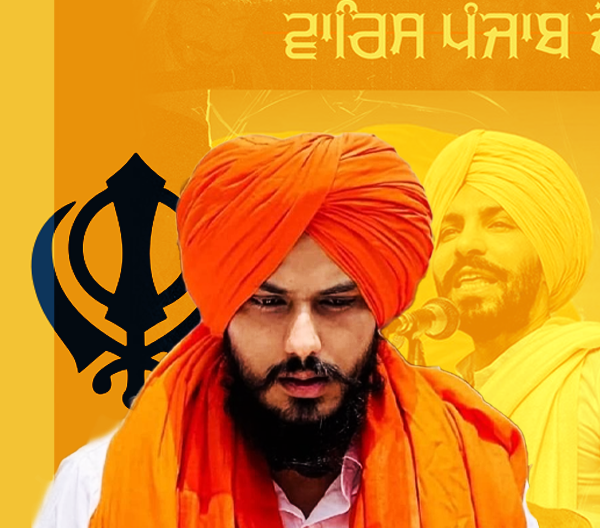Amritpal Singh and the New Khalistan Movement in Indian Punjab
The history of Punjab, a culturally rich and diverse region in northern India, has been marked by numerous political and social movements. One such movement that continues to stir emotions and spark discussions is the Khalistan movement. We take a closer look at Amritpal Singh, an emerging leader in the new Khalistan movement, and the implications of the movement for the future of Punjab and India as a whole.
Amritpal Singh: The Face of the New Khalistan Movement
Amritpal Singh, a passionate and charismatic young leader, has breathed new life into the Khalistan movement. Singh, 30, was born in Amritsar’s Jallupur village in 1993. He went to work with his uncle in Dubai in 2012 after his schooling in Amritsar. He was influenced by Deep Sidhu, an Indian Punjabi actor, who led a prominent role in the 2020 Farmer’s Protest.
His dedication to the cause has brought together a wide array of supporters, ranging from the Sikh diaspora to various political and social organizations. Singh’s vision of an independent Sikh homeland, Khalistan, resonates with many who feel marginalized by the Indian state.
Background of the Khalistan Movement
The Khalistan movement traces its roots back to the early 20th century when the idea of a separate Sikh nation started to gain traction. However, it was during the 1980s that the movement truly gained momentum, as tensions between the Sikh community and the Indian government reached a boiling point.
The violent crackdown by the Indian government during Operation Blue Star in 1984, which resulted in the destruction of the holy Golden Temple in Amritsar, fueled the Khalistan movement’s rise. The movement, however, eventually lost steam in the 1990s due to a combination of factors, including internal divisions, loss of public support, and effective counter-insurgency measures by the Indian government.
The Reemergence of the Khalistan Movement
In recent years, the Khalistan movement has witnessed a resurgence, with Amritpal Singh at the helm. Singh has managed to garner support for the cause by using social media and leveraging the power of the Sikh diaspora, particularly in countries such as Canada, the United States, and the United Kingdom. He has been instrumental in organizing rallies, protests, and conferences to spread awareness and reignite the passion for Khalistan.
The new Khalistan movement faces numerous challenges, both internal and external. Internally, the movement is fragmented, with various factions holding different visions for Khalistan. Moreover, the movement has the potential to exacerbate communal tensions within Punjab, as well as between India and Pakistan. The latter is especially concerning, given the historical animosity between the two countries and their nuclear capabilities.
Amritpal Singh and the new Khalistan movement have managed to revive a dormant issue in Indian politics. While the movement faces significant challenges, its reemergence highlights the unresolved grievances of the Sikh community and underscores the importance of addressing these concerns in a peaceful and inclusive manner. Indian Govt under Amit Shah has responded with force and abductions, currently Internet is completely switched off in Punjab and Police has been raiding anyone associated with Amritpal Singh or Waris Punjab De.



